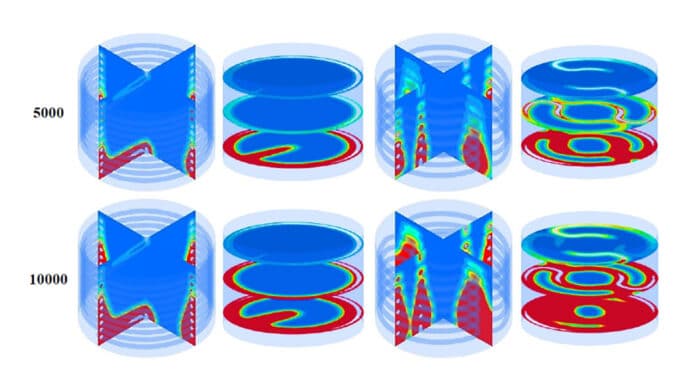A move away from fossil fuel-based energy resources toward renewable forms of energy is underway on a global scale. Since many forms of renewable energy provide electricity in a dynamic way, energy storage is required to balance the load. Hydrogen-based energy storage is receiving much attention for this purpose.
Researchers from the University of Technology Sydney (UTS) and Queensland University of Technology (QUT) have developed a new method to improve solid-state hydrogen fuel cell charging times.
Compressed gas is the most common form of hydrogen storage. However, it can also be stored in a liquid or solid state. Researchers said solid hydrogen storage, and in particular metal hydride, is attracting interest because it is safer, more compact, and lower cost than compressed gas or liquid, and it can reversibly absorb and release hydrogen. However, a problem with metal hydride for hydrogen energy storage has been its low thermal conductivity, which leads to slow charging and discharging times.
To address this, the researchers developed a new method to improve solid-state hydrogen charging and discharging times. They developed a semi-cylindrical coil as an internal heat exchanger, which significantly improved heat transfer performance. The hydrogen charging time was reduced by 59% when using the new semi-cylindrical coil compared to a traditional helical coil heat exchanger.
“Several internal heat exchangers have been designed for use with metal hydride hydrogen storage. These include straight tubes, helical coil or spiral tubes, U-shape tubes, and fins. Using a helical coil significantly improves heat and mass transfer inside the storage,” said Puchanee Larpruenrudee, a Ph.D. candidate in the UTS School of Mechanical and Mechatronic Engineering and the first author of the study. “This is due to the secondary circulation and having more surface area for heat removal from the metal hydride powder to the cooling fluid. Our study further developed a helical coil to increase heat transfer performance.”
The team is now working on the numerical simulation of the hydrogen desorption process and continuing to improve absorption times. The semi-cylindrical coil heat exchanger will be further developed for this purpose. Finally, the researchers aim to design new hydrogen energy storage, which will combine other types of heat exchangers. They hope to work with industry partners to investigate real tank performance based on the new heat exchanger.
